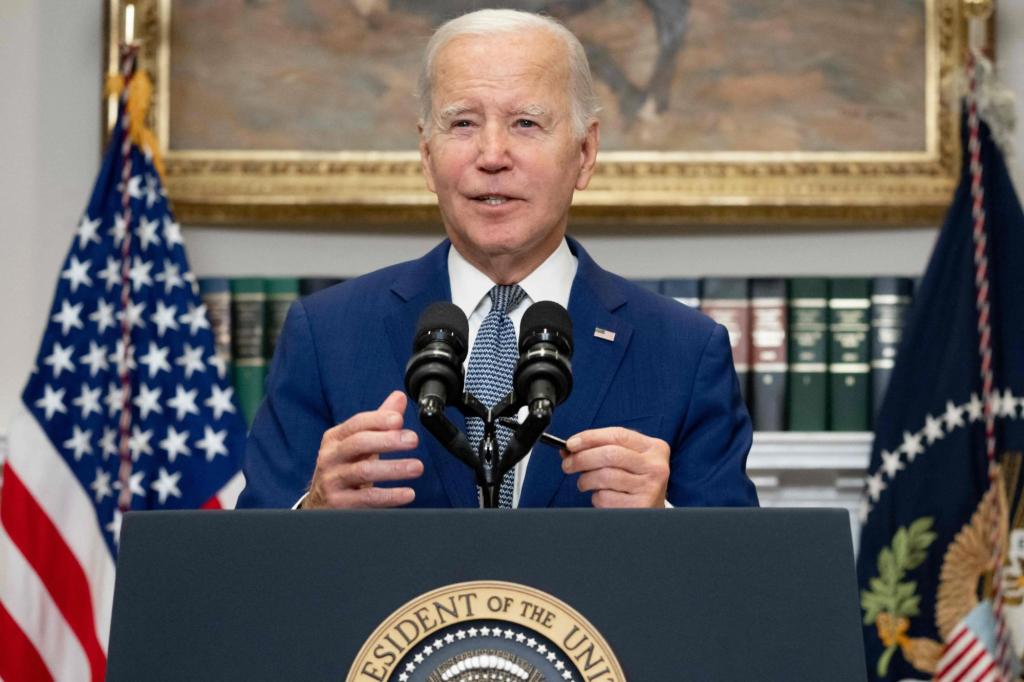For the past two years, Americans about to retire have felt like Charlie Brown, ready to take up football.
They think their nest egg is big enough, but then the monthly inflation data shows the cost of living rising again.
When President Joe Biden took away football, prospective retirees realized they couldn’t quit their jobs just yet.
Charitably speaking, Biden’s economic leadership is lacking.
When he took office, the economy was growing at an annual rate of $1.5 trillion and adding an average of 500,000 jobs a month.
Inflation was just 1.4%, below the Federal Reserve’s target of 2%.
Just 18 months later, Biden succeeded in pushing inflation to its highest level in 40 years, with prices rising in one month almost as fast as they rose in the year before he took office.
At the same time, the economy contracted for two consecutive quarters, which we called a recession.
Inflation has slowed from its breakneck pace but is accelerating again and economic growth is anemic.
The labor market remains 4.5 million to 5.5 million workers short, with employment well below pre-pandemic trends.
When all these absentee workers are taken into account, the unemployment rate is over 6%.
What’s really hurting people who wanted to retire is persistent inflation.
If you’re a retiree planning to leave your job with $1 million in savings and investments, you’ll need to make some fundamental adjustments to your calculations. Prices have risen by about 17% on average since President Biden took office.
That means you would need to save an additional $170,000 to get the same real value for your nest egg.
But that assumes inflation returns to pre-Biden lows, which won’t happen soon. Government spending, borrowing and money creation remain elevated.
As inflation rates rise, your retirement savings will be eroded faster, requiring a larger portfolio to cover your living expenses.
Even in the unlikely scenario that government spending returns to reality and inflation returns to 2%, the aspiring retiree in this example would need to come up with at least $170,000 in additional funds.
Otherwise, you will have to significantly reduce your quality of life in retirement.
These additional savings are hard to find. The average annual income for people between the ages of 55 and 64 is less than $62,000.
Even if a retiree were somehow able to save $31,000 a year (half of their income), they would still need to work for an additional five years, thanks to inflation over the past two and a half years.
Saving this amount of money is difficult under normal circumstances, but inflation makes it even more difficult. Today’s rising cost of living means you have less money available to save and invest at the end of the month.
Monthly savings have fallen by 82% since Biden took office.
The savings rate dropped from 19.3% of disposable income in January 2021 to just 2.7% in June 2022.
According to the latest data, that percentage is still very low, at just 3.9%.
Before Biden’s tenure, savings rates hadn’t been this low since the height of the Great Recession in 2008.
So even if a retiree were able to achieve a savings rate 10 times the average, they would still save less than $24,000.
It will take more than seven more years of work to save up the $170,000 needed to cover the inflation Biden will oversee.
This doesn’t even take into account the fact that most people move their money into bonds as they near retirement, and that income from bonds is eroded by inflation.
To make matters worse, rising interest rates have lowered bond selling prices, making it difficult for savers to part with their bonds.
For those planning to retire, there is no escaping the financial pain of Bidennomics.
They will either have to hope the next administration changes course or plan to continue working for years to come.
EJ Antoni is a financial economist at the Heritage Foundation and a senior fellow at the Committee to Unleash Prosperity.

